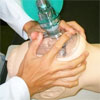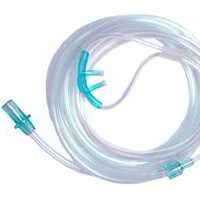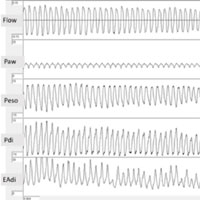Tag: ventilation

Noninvasive Ventilation Through the Helmet Can Be Used For Early Mild and Moderate ARDS
Debating data have been published as regards the beneficial or deleterious effect of spontaneous breathing (SB) in comparison to controlled mechanical ventilation (CMV) during acute respiratory failure. Spontaneous breathing... read more

Association of Age With Short-term and Long-term Mortality Among Patients Discharged From ICUs in France
Results of this study suggest that aging was associated with an increased risk of mortality in the 3 years after hospital discharge that included an ICU admission, with a sharp increase in those 80 years and older. However,... read more

Diaphragm-protective Mechanical Ventilation
Diaphragm dysfunction is common in mechanically ventilated patients and predisposes them to prolonged ventilator dependence and poor clinical outcomes. Mechanical ventilation is a major cause of diaphragm dysfunction in these... read more

Optimizing Respiratory Management in Resource-limited Settings
This review focuses on the emerging body of literature regarding the management of acute respiratory failure (ARF) in low- and middle-income countries (LMICs). The aim is to abstract management principles that are of relevance... read more

Noninvasive ventilation for avoidance of reintubation in patients with various cough strength
The aim of this study was to assess whether prophylactic noninvasive ventilation (NIV) would benefit patients with various cough strengths.... read more

PERFECT Protocol: Volume-based Feeding in Ventilated Adults
Underfeeding in critical illness is common and associated with poor outcomes. Researchers in the UK designed a before-and-after study to evaluate the safety, efficacy and clinical outcomes associated with volume-based feeding... read more

Economic Evaluation of vv-ECMO for Severe ARDS
Venovenous extracorporeal membrane oxygenation (vv-ECMO) is increasingly being used to support patients with severe acute respiratory distress syndrome (ARDS), but its cost-effectiveness is unknown. The cost-utility of vv-ECMO... read more

High-flow Oxygen Through Nasal Cannula in Acute Hypoxemic Respiratory Failure
In patients with nonhypercapnic acute hypoxemic respiratory failure, treatment with high-flow oxygen, standard oxygen, or noninvasive ventilation did not result in significantly different intubation rates. There was a significant... read more

Applied Physiology at the Bedside: Volumetric Capnography
Volumetric capnography is the graphical representation of the partial pressure of carbon dioxide (CO2) versus exhaled volume. This measurement is made noninvasively at every breath by a combination of flow and CO2 sensors,... read more

In-Hospital Cardiac Arrest
In-hospital cardiac arrest is common and associated with a high mortality rate. Despite this, in-hospital cardiac arrest has received little attention compared with other high-risk cardiovascular conditions, such as stroke,... read more

Neurally adjusted ventilatory assist decreases work of breathing during non-invasive ventilation in infants with severe bronchiolitis
In this physiological study, we report an improvement of respiratory unloading by adding a second level of pressure with NAVA in infants with severe bronchiolitis. WOB decreased immediately after switching to NAVA, as reported... read more
What is the lowest change in cardiac output that transthoracic echocardiography can detect?
In critically ill patients, changes in the velocity-time integral (VTI) of the left ventricular outflow tract, measured by transthoracic echocardiography (TTE), are often used to non-invasively assess the response to fluid... read more

Effect of position and positive pressure ventilation on functional residual capacity in morbidly obese patients
In awake morbidly obese volunteers, an increase in the FRC is observed when spontaneous ventilation at zero inspiratory pressure is switched to positive pressure. Compared with S positioning, the BC position had no measurable... read more

Sleep Deprived-Patients in ICU May Fail to Get Off Ventilation
Attempts to wean intubated, critically ill patients off mechanical ventilators were less successful when the patients exhibited atypical sleep or pathological wakefulness, researchers reported. The findings suggest that sleep... read more




